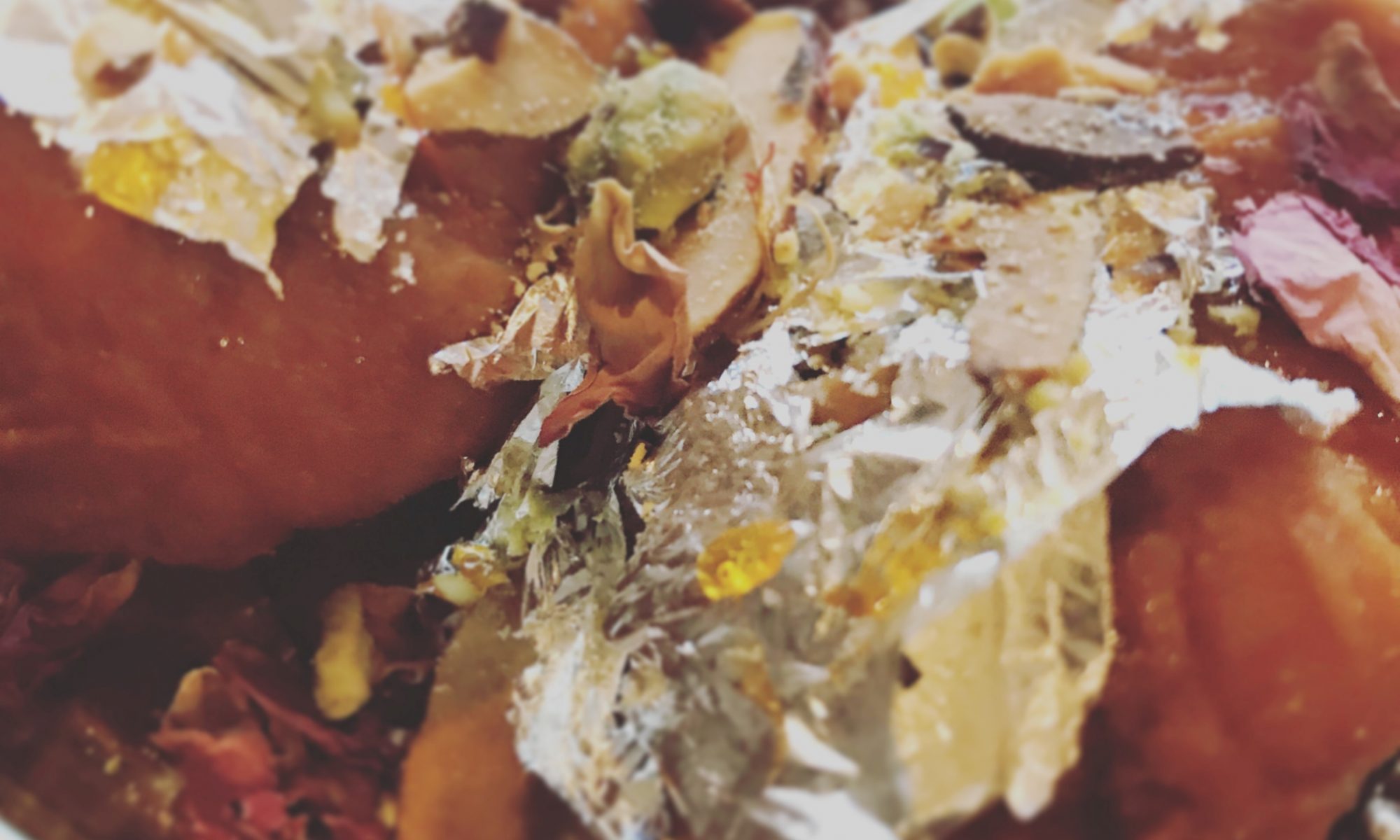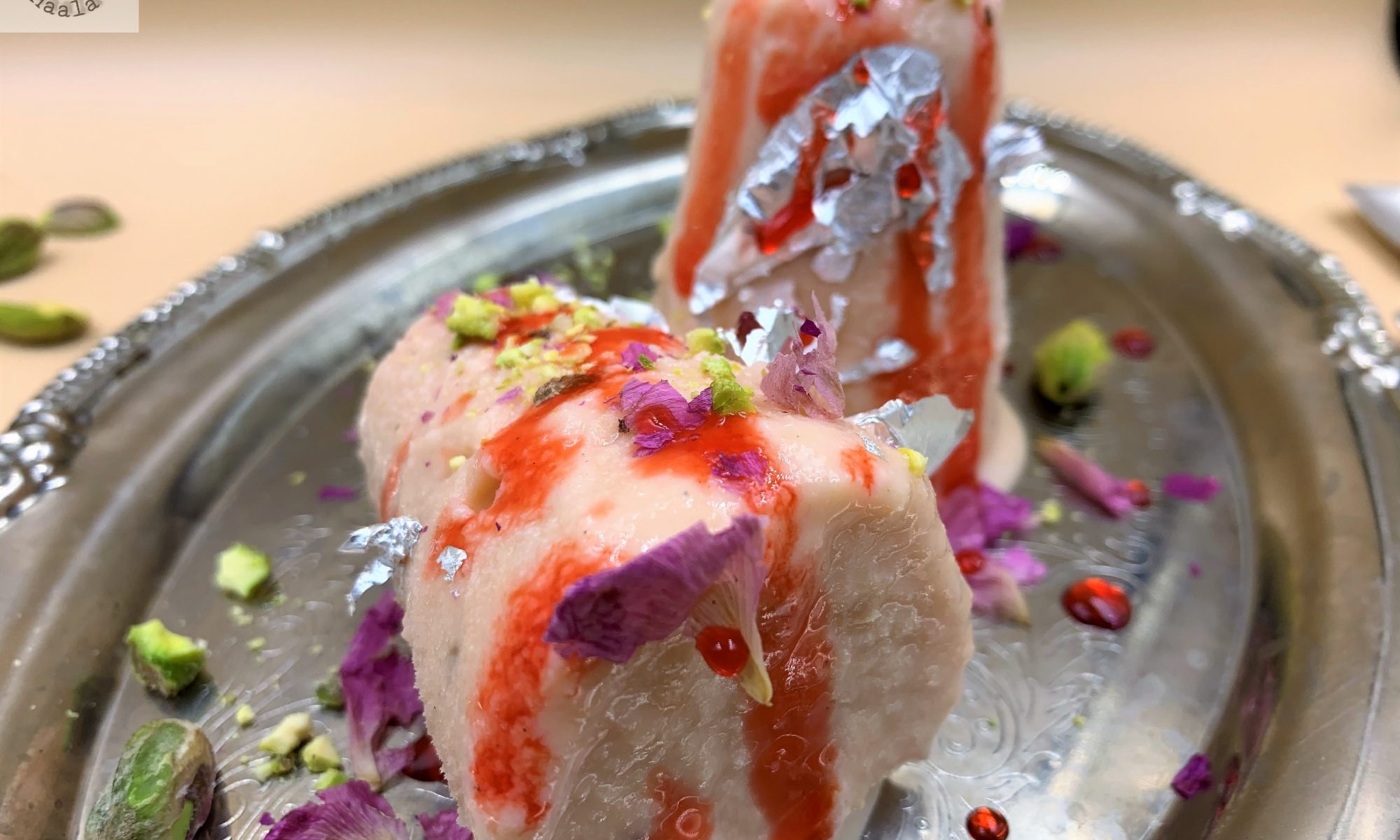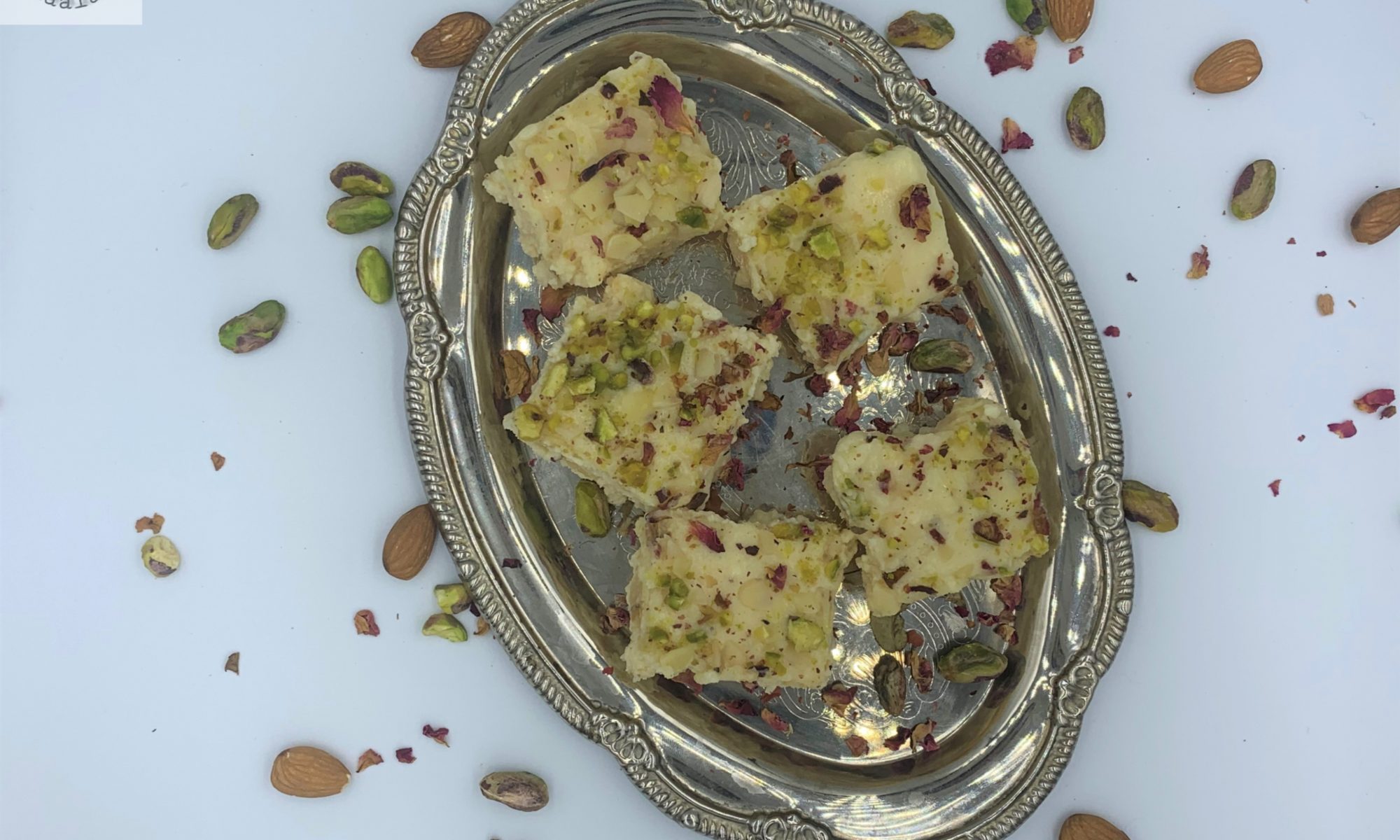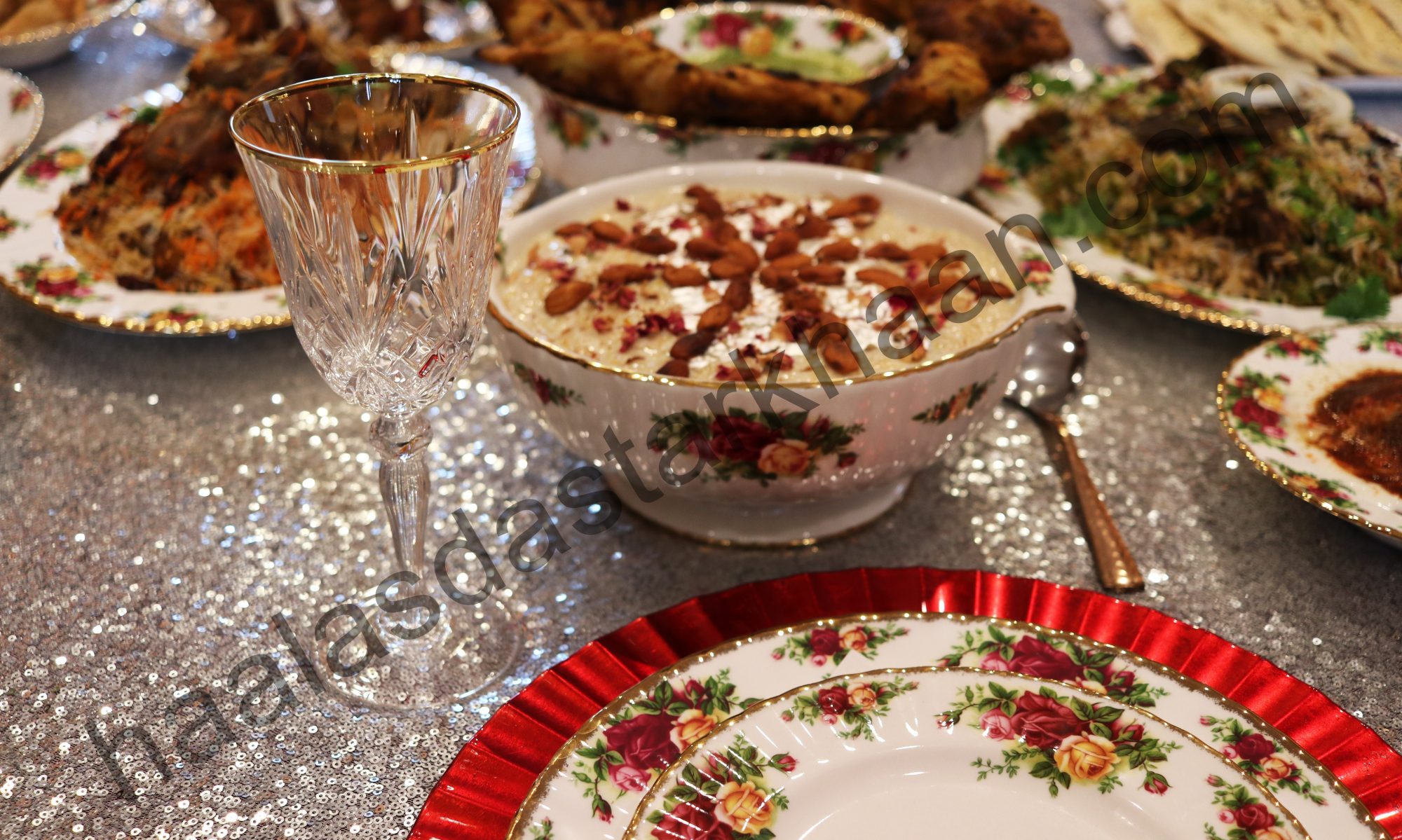
Some sweets are connected to beautiful festivals. They always remind us of occasions and celebrations. I always connect Badusha or Balushahi with Diwali. I had friends who would serve homemade and sometimes store bought Badushas and they would be loved by everyone. I know this post should have actually been a Diwali special but sweets don’t need an occasion, they just need a sweet craving and zest and time to make a sweet dish.
Diwali is over but still posting this delicious balushahi recipe as I can’t resist my cravings and eternal love for Indian desserts or mithai. Since we don’t get Badusha in USA as it ain’t that popular here, mainly I feel its because the people have not tried it. So, I decided on making my own, multiple unsuccessful trials but I just had to make it perfect and I am glad I did. The temptation was too strong to let it go.
My mom is a big fan of this sweet dish. In fact I have heard stories that this was one of the sweet dishes made on my parent’s wedding. There is an old sweet market in my home city Jodhpur called “Pongal pada” and the street has variety of Badushas in different colors and textures and are called Maakhan Bada [meaning sweets made using butter]. Though Badusha is soaked in sugar syrup, the Maakhan Bada is covered with thick coated sugar, something close to fondant but slightly hard.
Once I cracked the recipe of the Badusha, there was no looking back. Its easy, flaky and your desire to eat just one, Did I say eat just? No one eats just one Badusha. Never!!! Its Balushahi in North India and called Badusha in South India. So, no matter what you call it, do try the recipe and make your own. These come out awesome, flaky and light. Once you try them, you will never bother getting them from the market sweet store anymore. Hope you like and enjoy them as much as I did.

The wonderful world of cold desserts and the version of ice creams served in India “Kulfi”. The word Kulfi or Qulfi is an Indian word derived from the Persian word “Qufli” which means “covered cup”. The dessert was likely originated during the era of the Mughal Empire in the 16th century. The mixture of milk, sugar and nuts. Kulfi is a gifted recipe from the Middle eastern travelers and settlers to India and neighboring countries. Along with so many architectural gifts to India, like the Taj mahal, which even till date makes our country so proud and has millions of visitors travel India only to see Taj Mahal once in their lifetime and so many gorgeous forts, along with Red Fort where the PM addresses the nation every year are all an awesome example of Mughal architectural skill.
Coming back the Kulfi, Indian cuisine were not aware of using Orange blossom, Rose water, saffron or a wide variety of dry fruits in the cuisine. The Mughals while introducing their cuisines and blending them with Indian flavors resulted in wide variety of Biryanis, Kebabs, curries and sweet dishes including Gulab Jamun, Jalebi and Rabri to name a few and of course, Kulfi.
This sweet dish is rich in flavor and can be made in various flavors and is always served cold. It can be served with Basil seeds or sabza that are soaked for an hour, as falooda. It can be flavored while serving as well. I usually like mine to be served with Rose syrup, or the popular Rooh Afza.
This particular recipe has Milk boiled till it thickens and reduces. Added Khoya and cooked further after adding sugar, cardamom powder, saffron, crushed Rose petals, Rose flavoring, a little red food color and Milk powder to thicken the mixture making the Kulfi more dense and creamier. You can always change the flavors in a Kulfi keeping the base the same.
I also use Silver leaf for decoration, but that’s always optional, but something that makes you home kulfi different from the restaurant and trust me, even better.

Kalakand is a popular and delicious Indian sweet. Its made by mixing Paneer with sugar and further mixing them with Reduced milk. Its a pretty dense milk fudge. It’s soft, grainy and delicious. It has a light flavor of Cardamom and saffron.
It has a subtle flavoring of cardamom and fragrance of Saffron. The top is decorated with Almonds and pistachios. You can also add some Rose petals. This recipe helps you make Kalakand at home with ease. The fact is when you are in a country far from home and you don’t get your favorite sweets where you live, then you have to make them at home. This recipe has all the details that will make the perfect Kalakand, the exact flavor from our home country.
Not that this recipe will be easy, but for sure the steps from this recipe are simple to understand and if you follow them properly, your Kalakand will be as amazing as it should be. The recipe is made from scratch and you can do it pretty easily, no fancy gadgets or ingredients needed either. It requires basic skills to stir well and stay focused for an hour and trust me, the result won’t just amaze you but it will be worth every second you spend. My hometown Jodhpur has some wonderful stores that specialize in making Kalakand and every time my family wanted kalakand, we would always get it from that particular sweet shop. When I tried making it at home, my mother definitely thought that I have gone completely nuts, but I didn’t have another option. Another problem with sweet stores in USA is that they do not make sweets other than those which are popular like Bengali sweets, one or 2 kinds of laddus, jalebi to name a few. They do sell Burfi but if you ever feel that you will find a wide variety like India then you will be highly disappointed and that’s when people like me come in and teach you easy ways of making your own.
Kalakand recipe is made using a handful of very basic ingredients like Homemade Cottage cheese/Paneer, Milk, cardamom crushed / cardamom powder, saffron, sugar and almonds+pistachios to garnish. As fancy as it looks, there is actually nothing too hard about this scrumptious sweet dish. Kalakand is best served cold, so make sure you keep it refrigerated.
Just make sure you keep a few things in mind when you decide on making Kalakand. Its always advisable to use freshly homemade Paneer. Fresh Paneer is soft in texture and blends well when we cook it with milk, giving that perfect grainy texture to the Kalakand, which is what you really want. A store bought Paneer is usually not too fresh and becomes firm. A firm and old Paneer or a frozen Paneer will never give you the same results. Almonds, Pistachios are rose petals look on Kalakand. To make it look more expensively rich, adding a few saffron strands would be great too. Enjoy!!!



